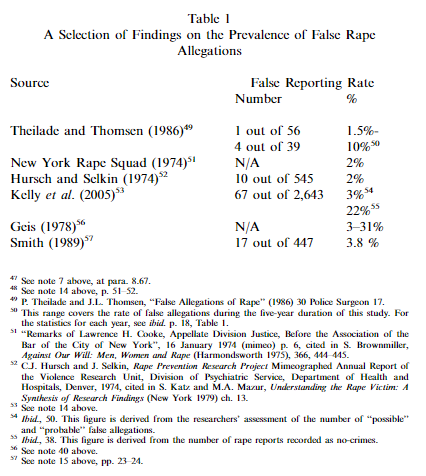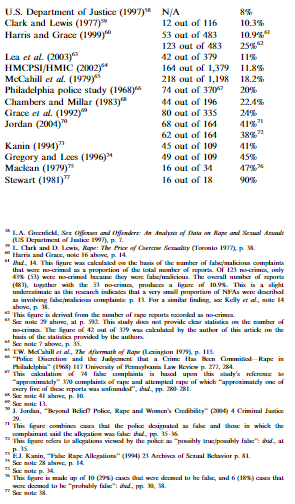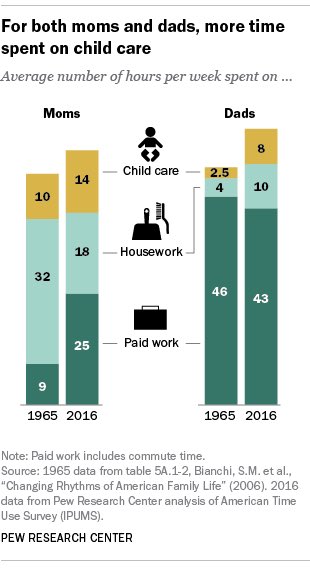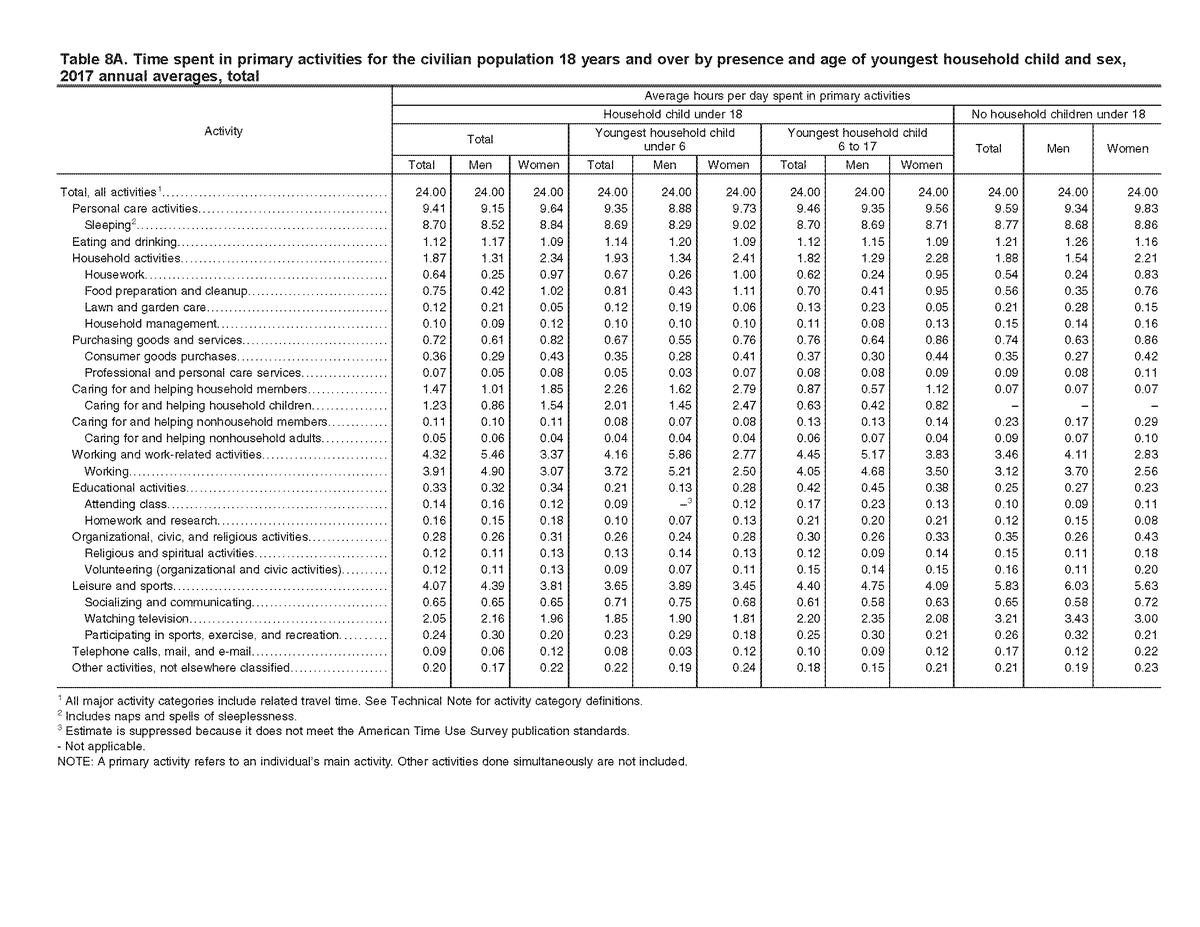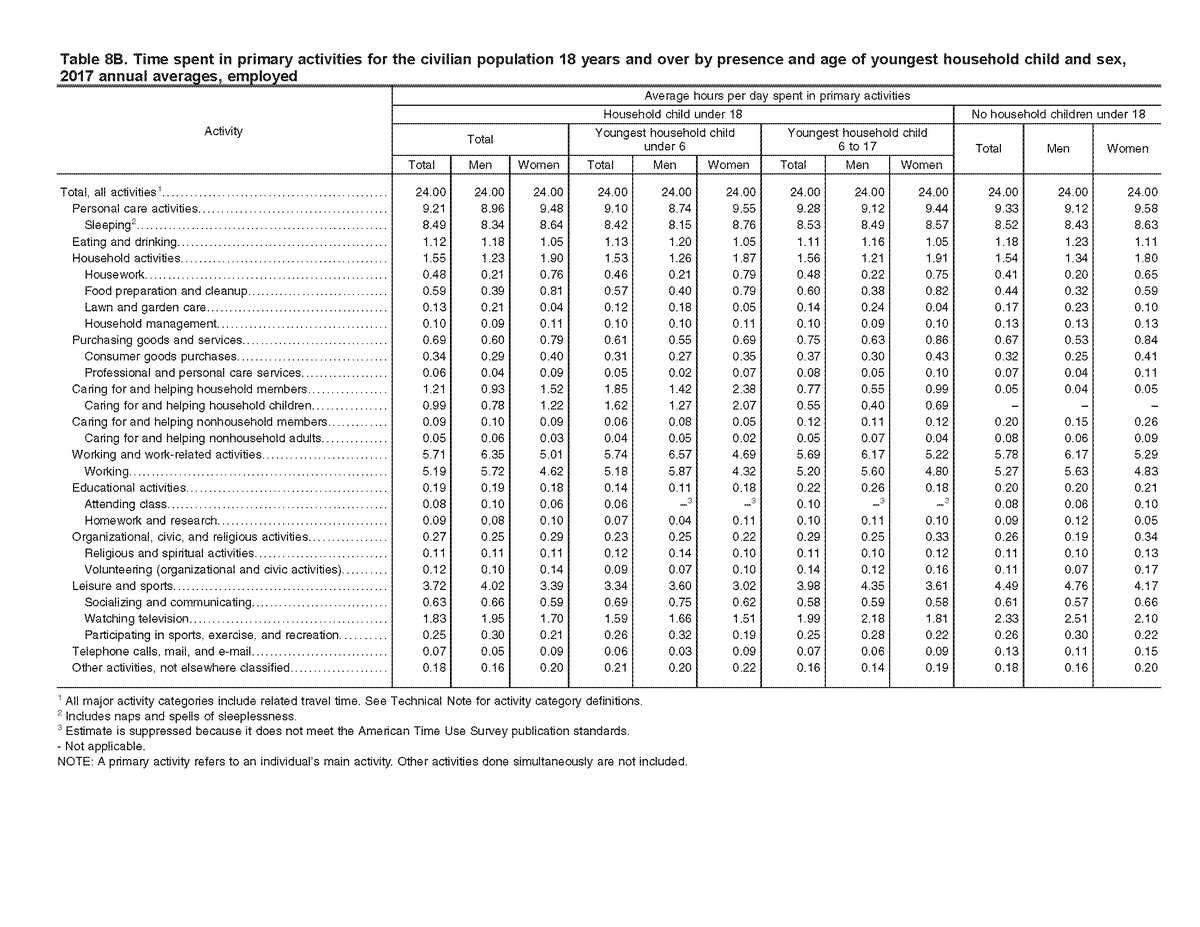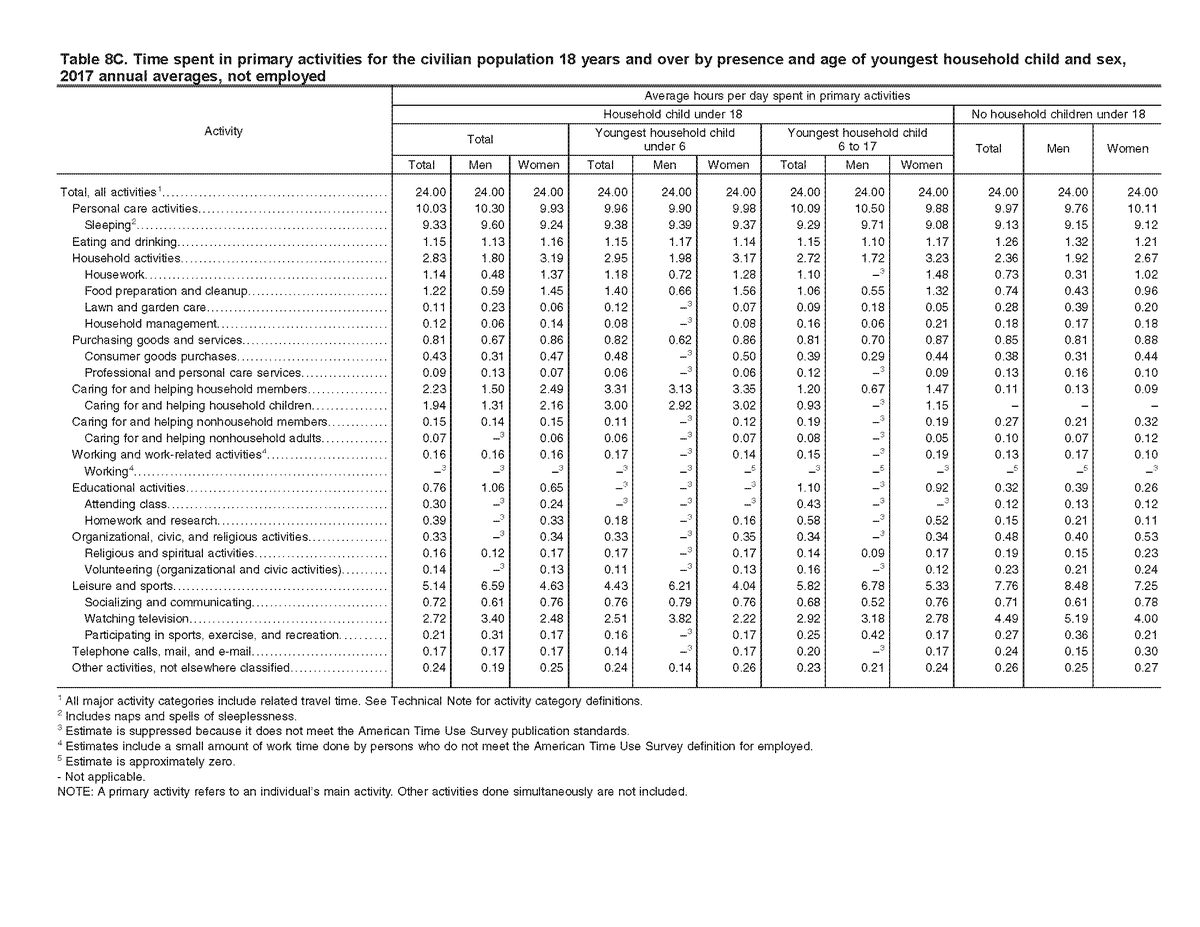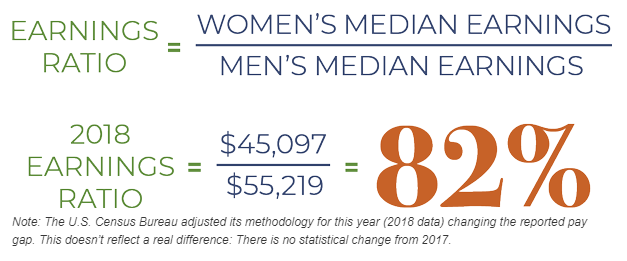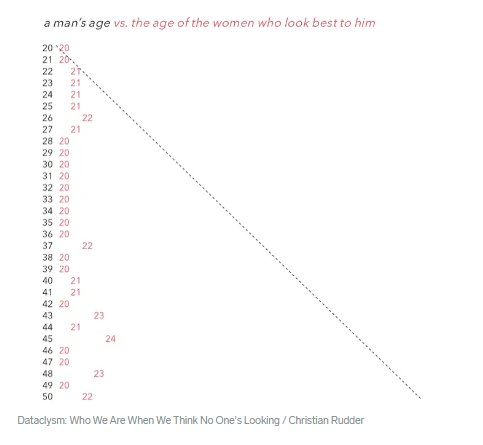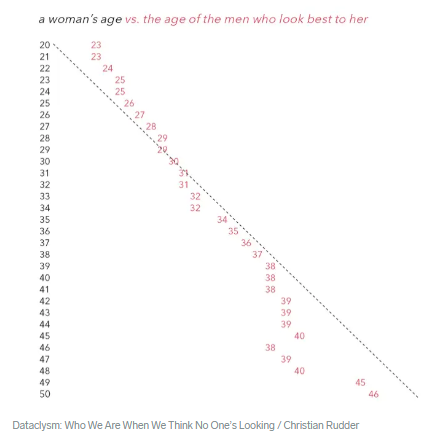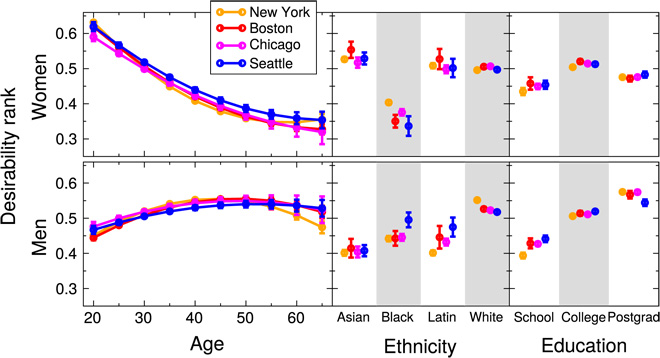I would be interested in what books you would recommend to see if there is conflicting information.
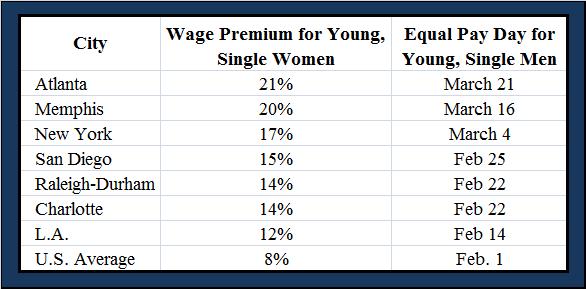
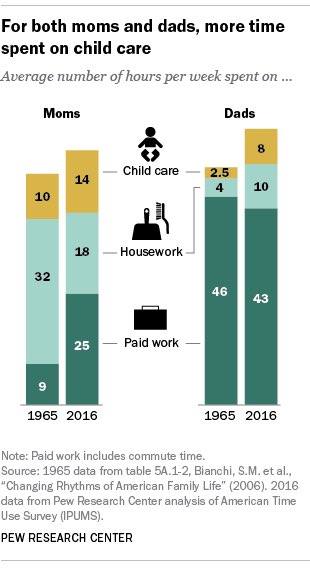
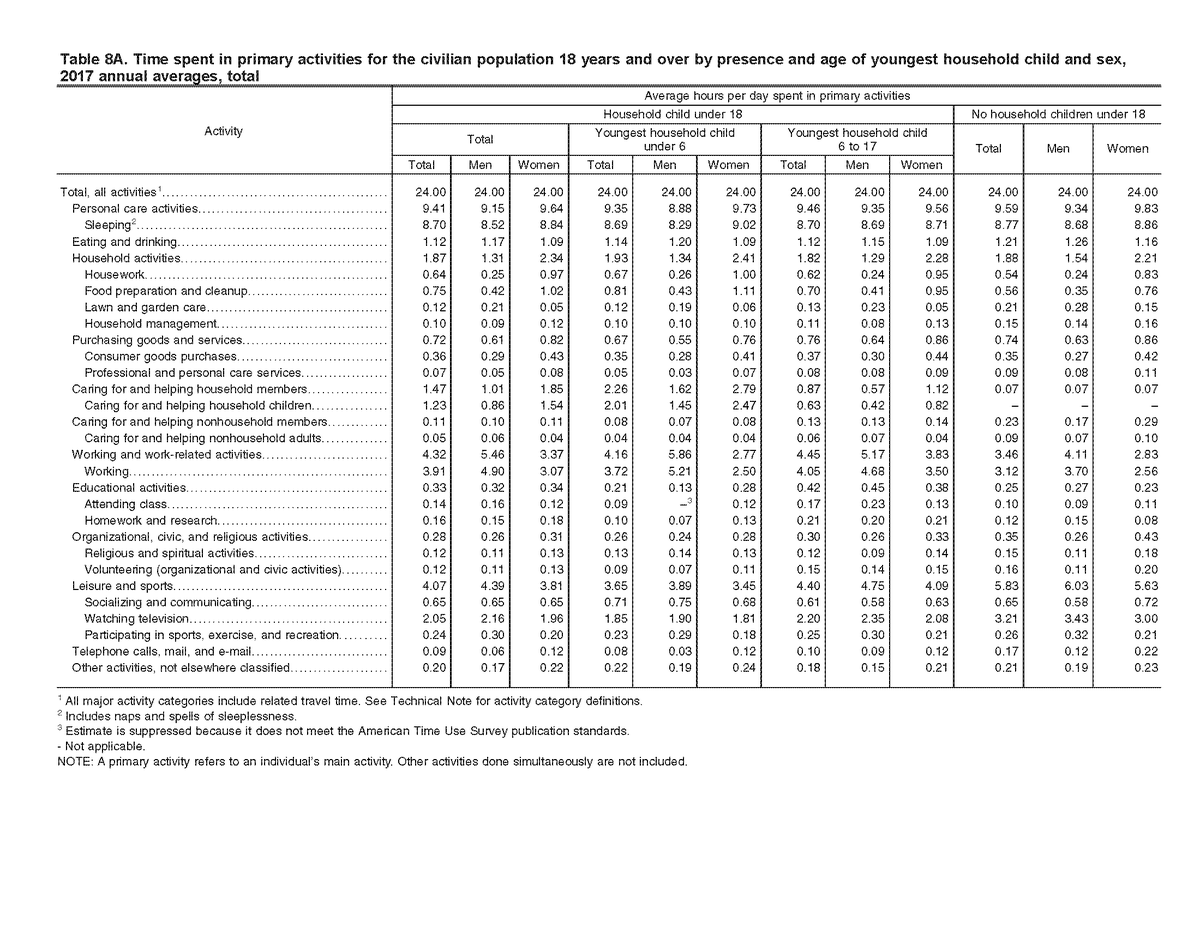

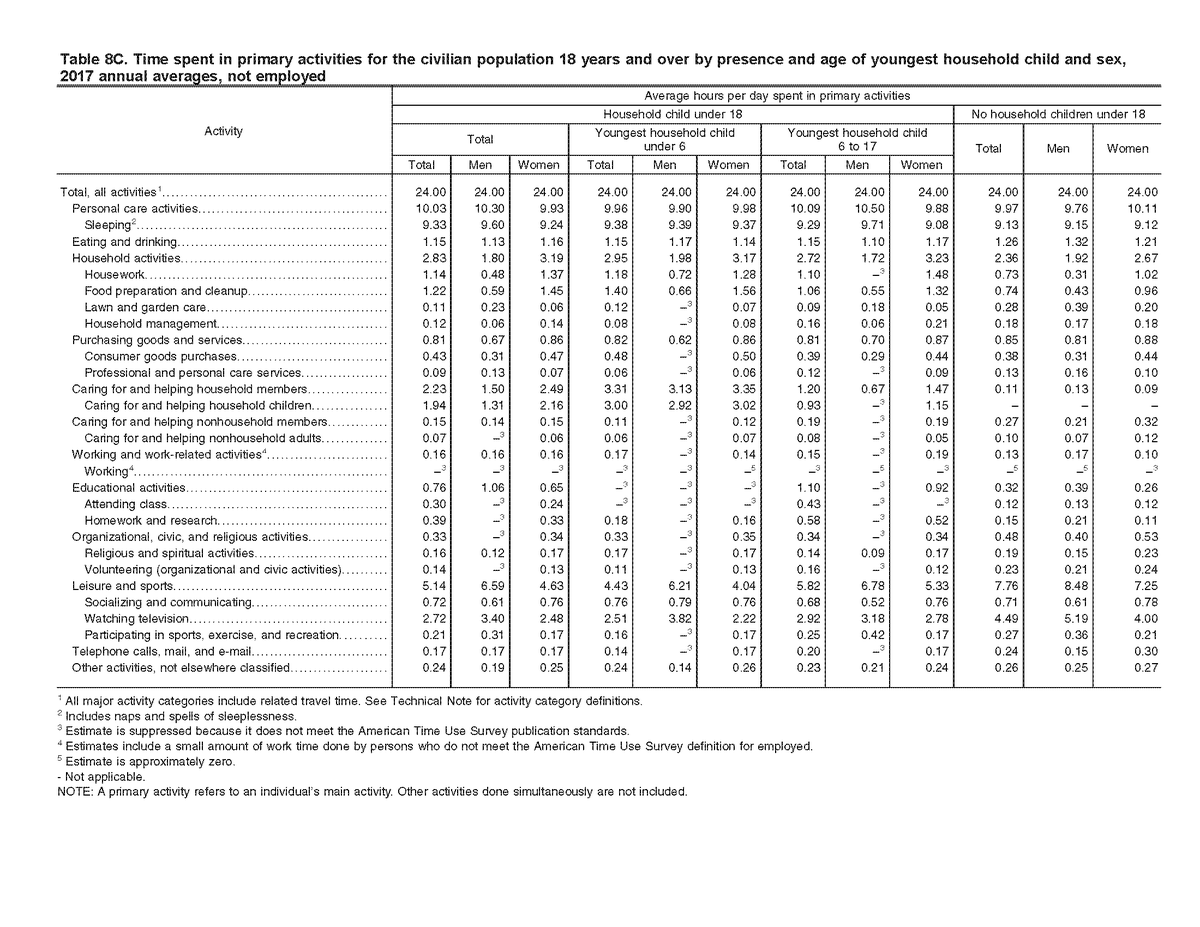
"[O]nce we control only for one variable—hours worked—and compare men and women both working 40-hours per week in 2017, more than one-third of the raw 18.2% pay gap reported by the BLS disappears" (fee.org/articles/a-new…).
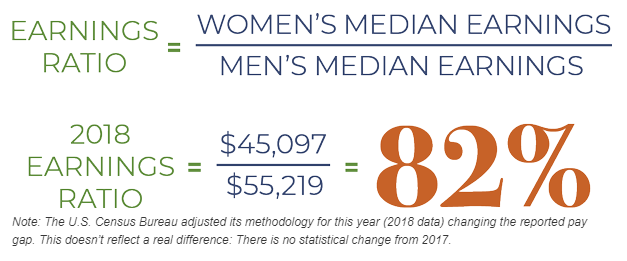
This adds up over time.
Albeit slower, this adds up fast.
On average, men just work more in America (considering both paid and unpaid).
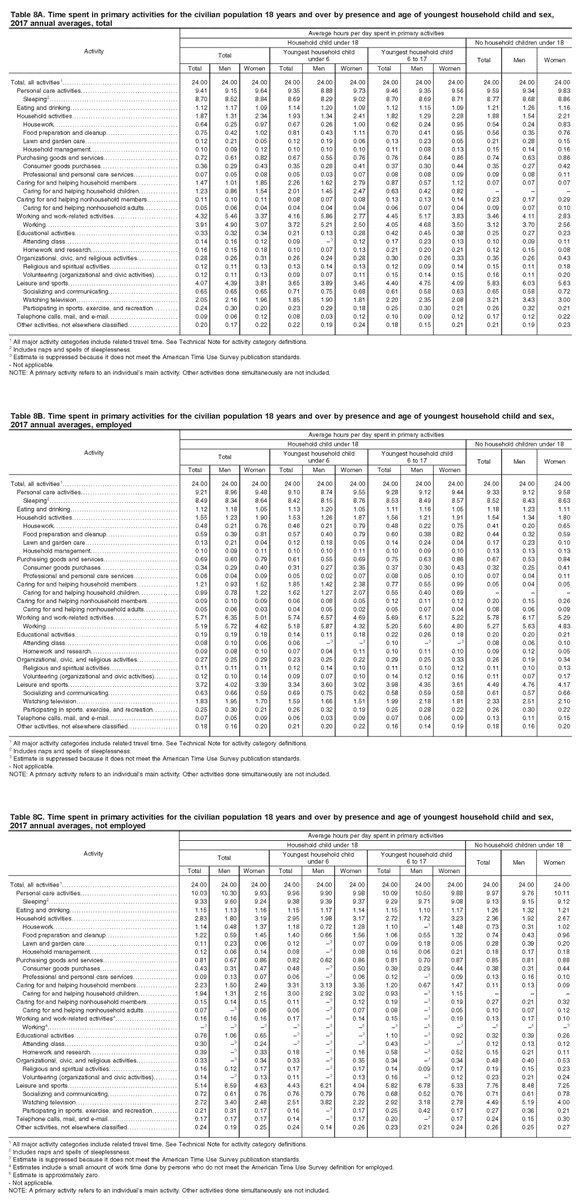
Table 8A, column 1: Men: Women:
Household activities: 1.31 2.34
Caring for household: 1.01 1.85
Work-related activities: 5.46 3.37
==========
Total: 7.78 7.56
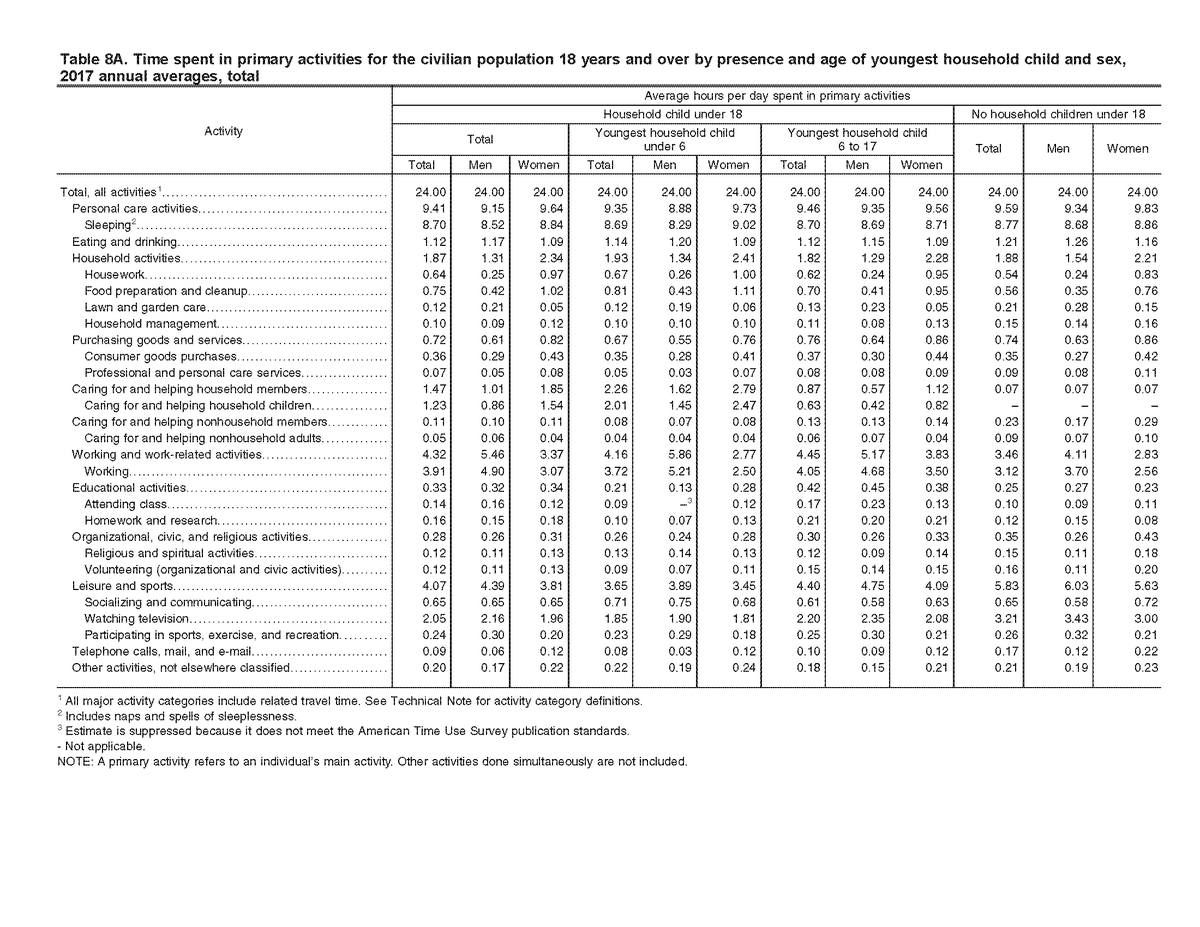
Women care for and help household members 2.08 more hours per day than men in the most extreme case presented by Table 8A, but men work 6.43 hours more per day than women.
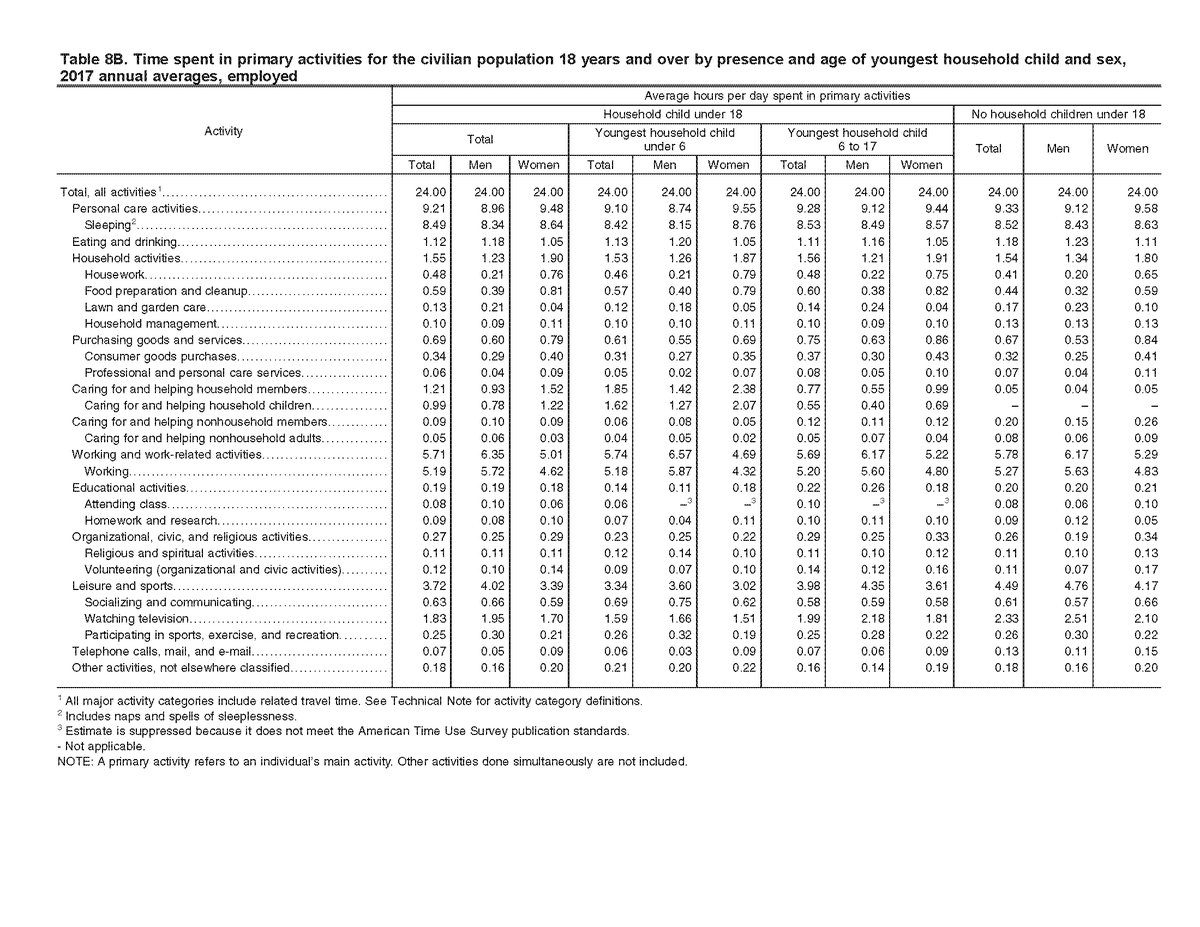
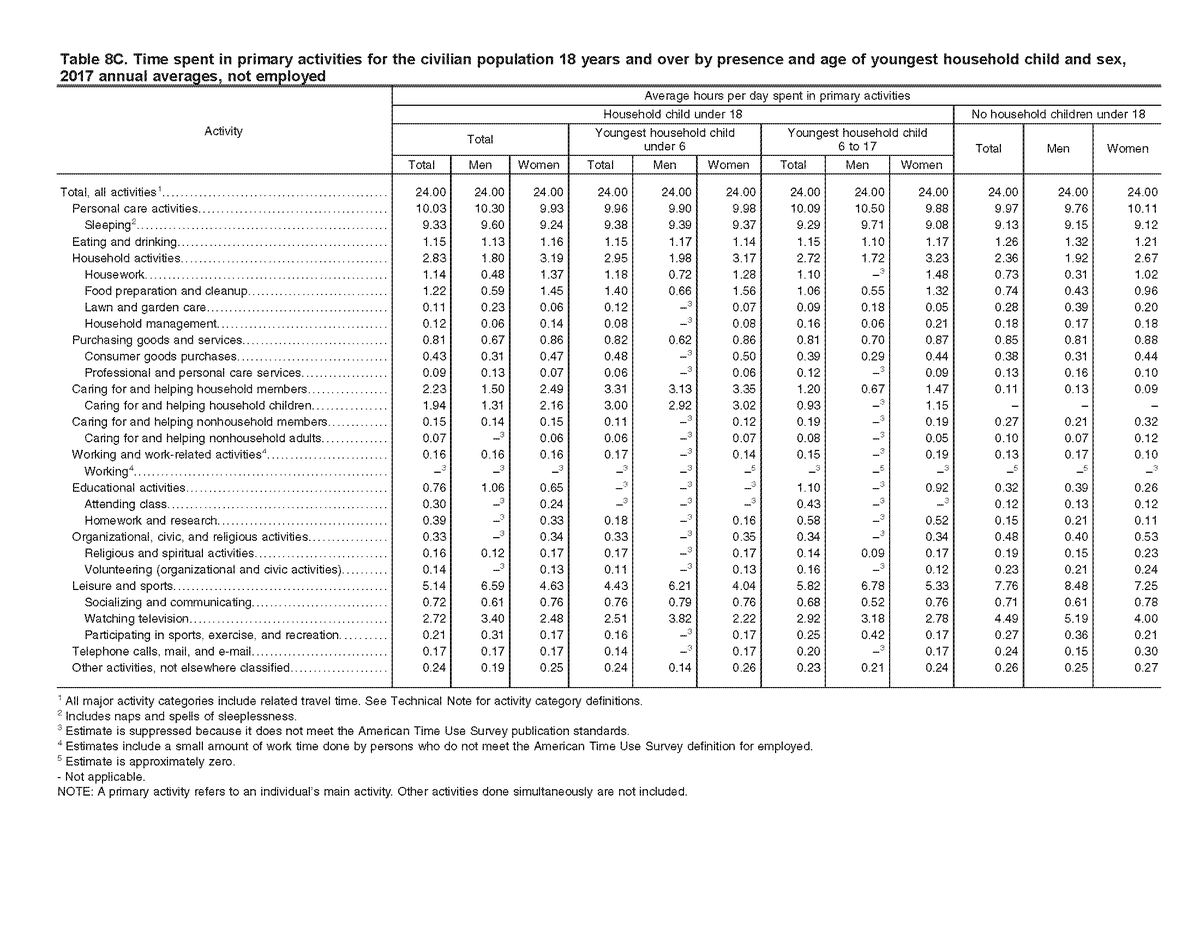
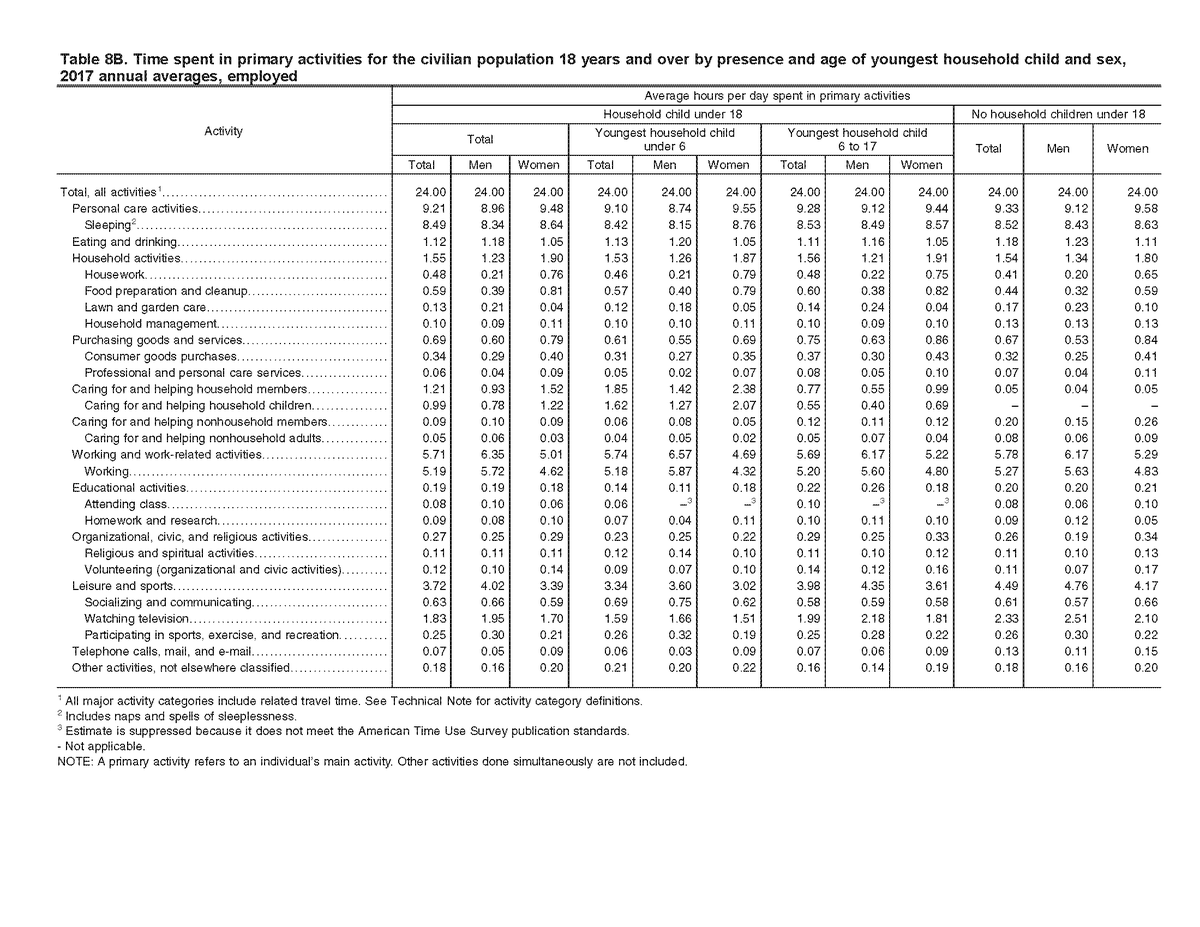

Household activities: 1.26 3.17
Caring for household: 1.42 3.36
Work-related activities: 6.57 0.00
==========
Total: 9.25 6.53
Women work more, huh?
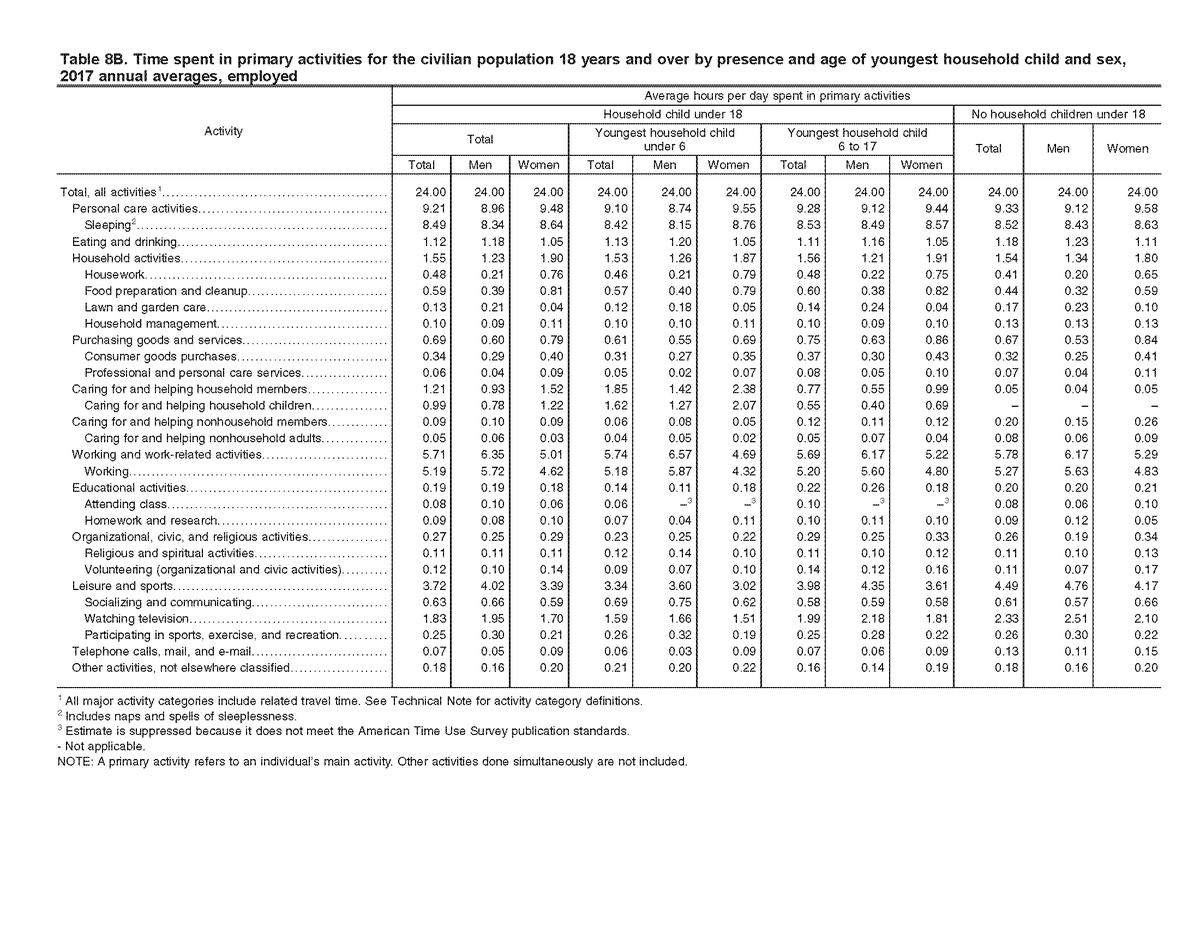
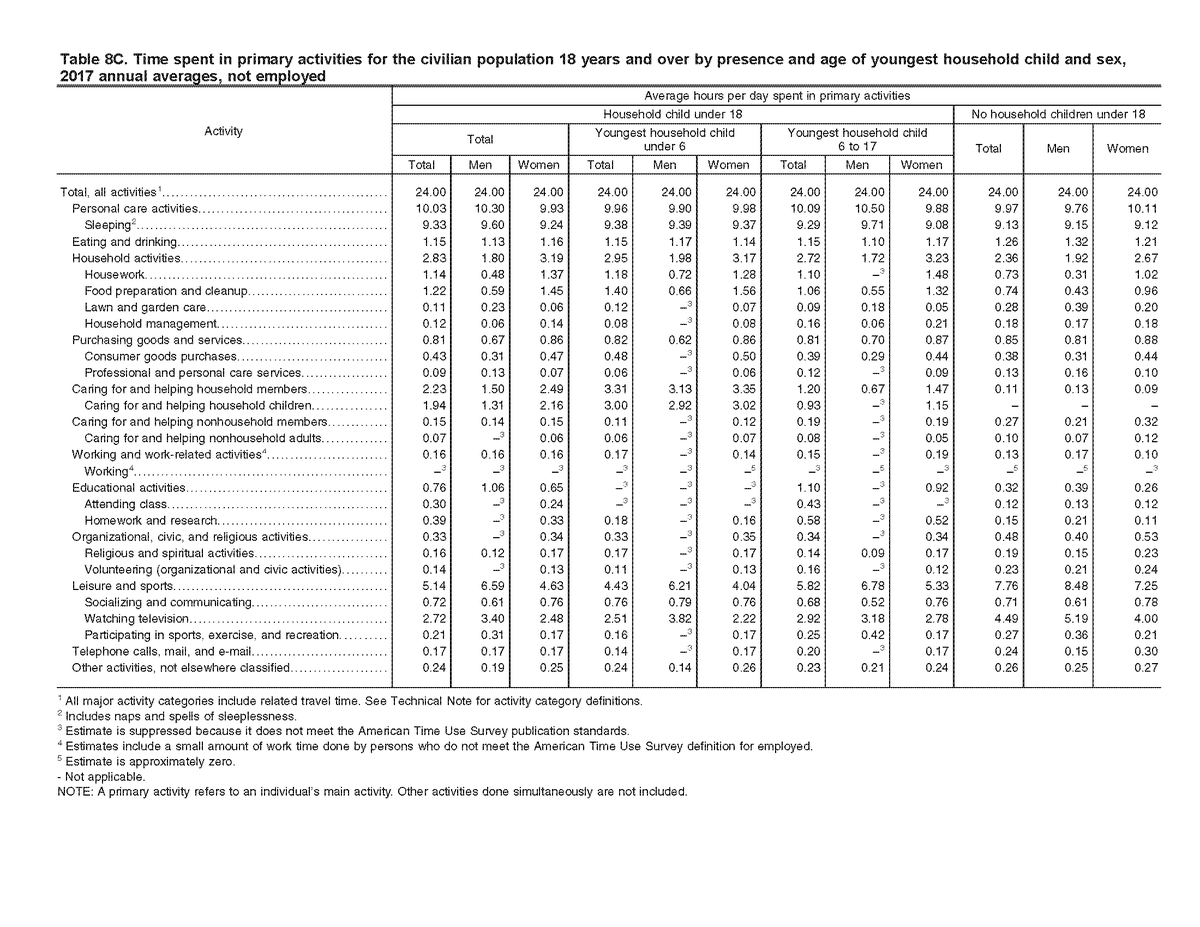
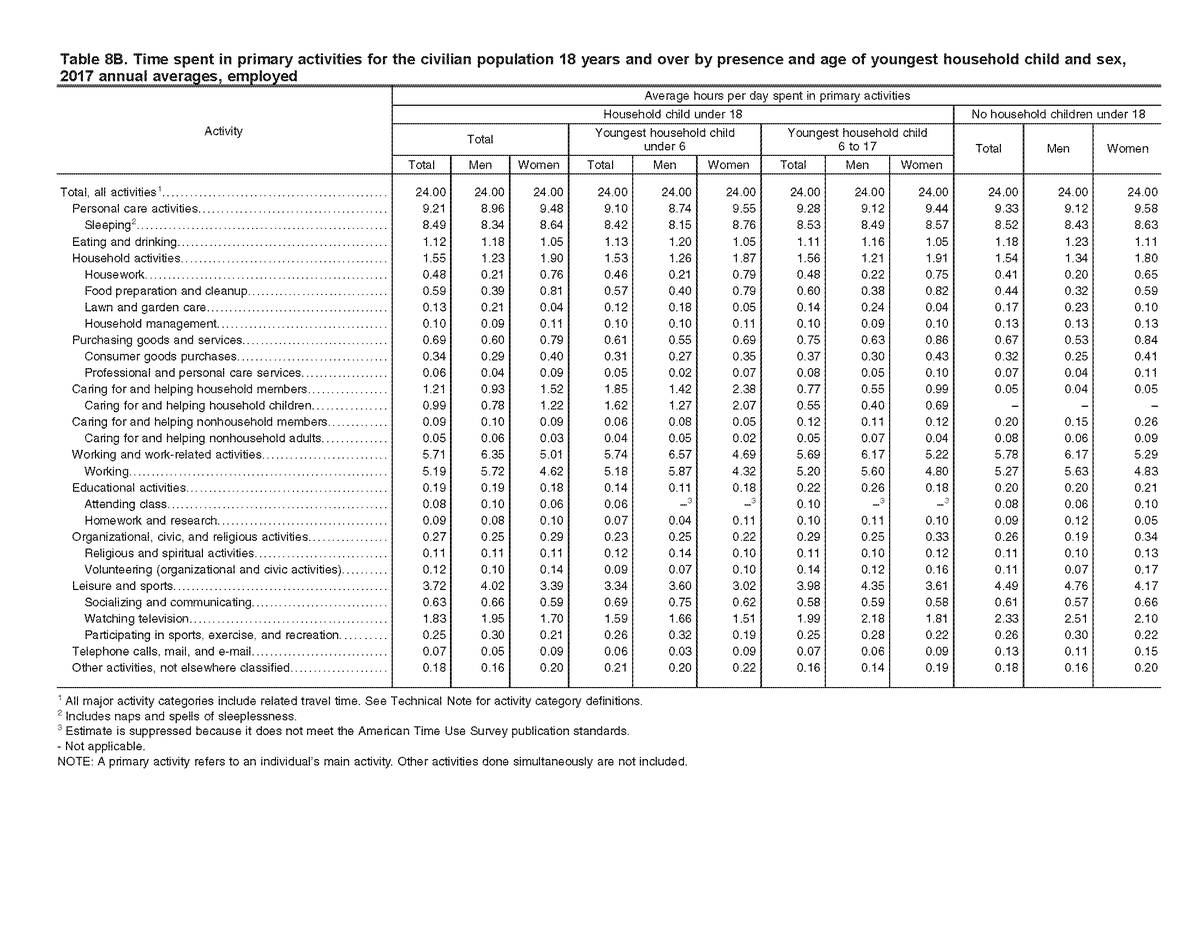
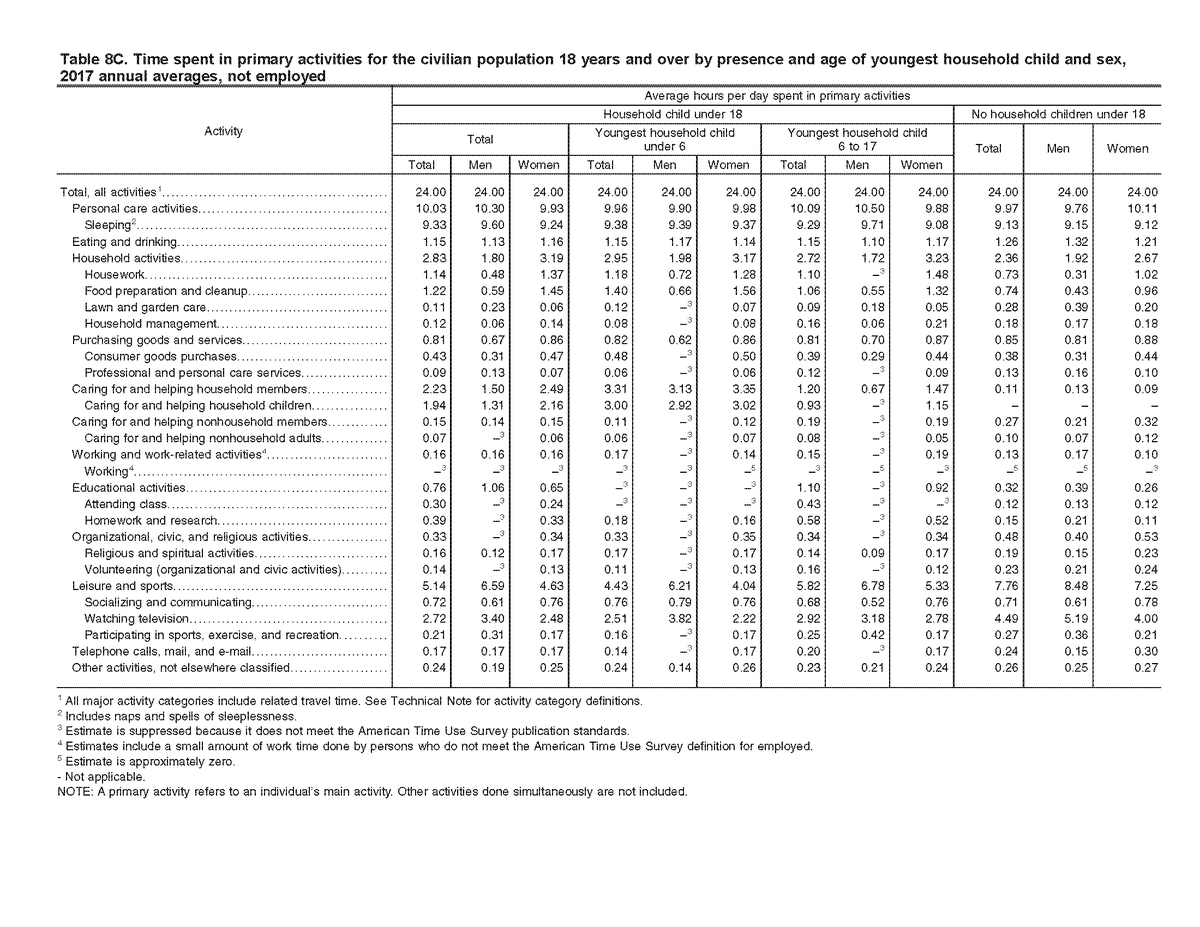
The American Time Use Survey does have an answer in Table 8B.
Let's check that out.
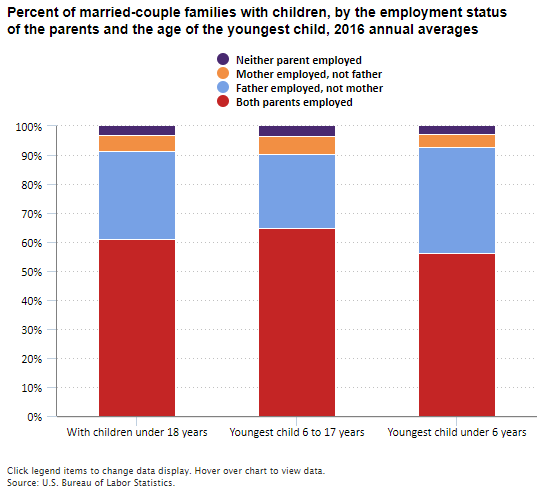
Table 8B, column 1: Men: Women:
Household activities: 1.23 1.90
Caring for household: 0.93 1.52
Work-related activities: 6.35 5.01
===========
Total: 8.51 8.43
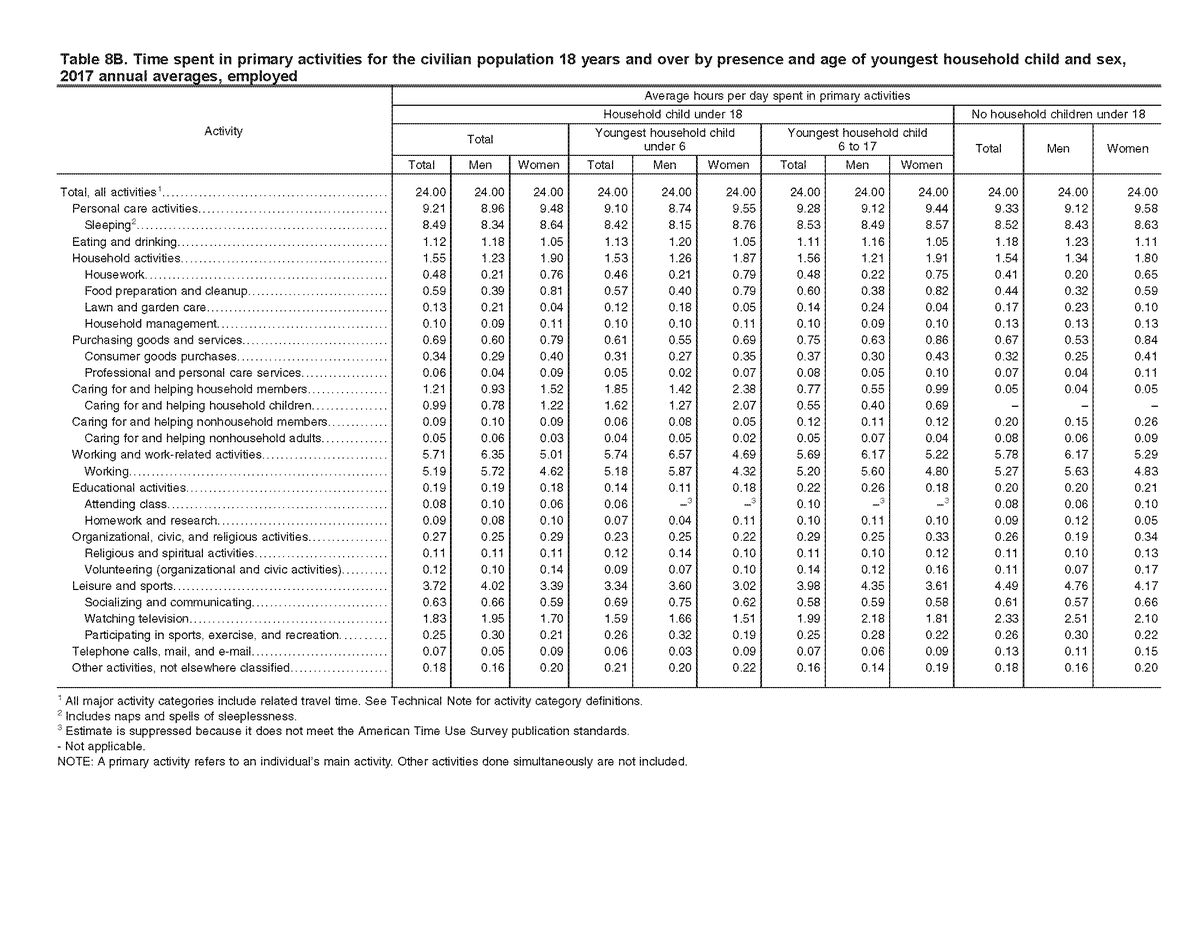
Table 8A, column 4: Men: Women:
Household activities: 1.54 2.21
Caring for household: 0.07 0.07
Work-related activities: 4.11 2.83
===========
Total: 5.72 5.11
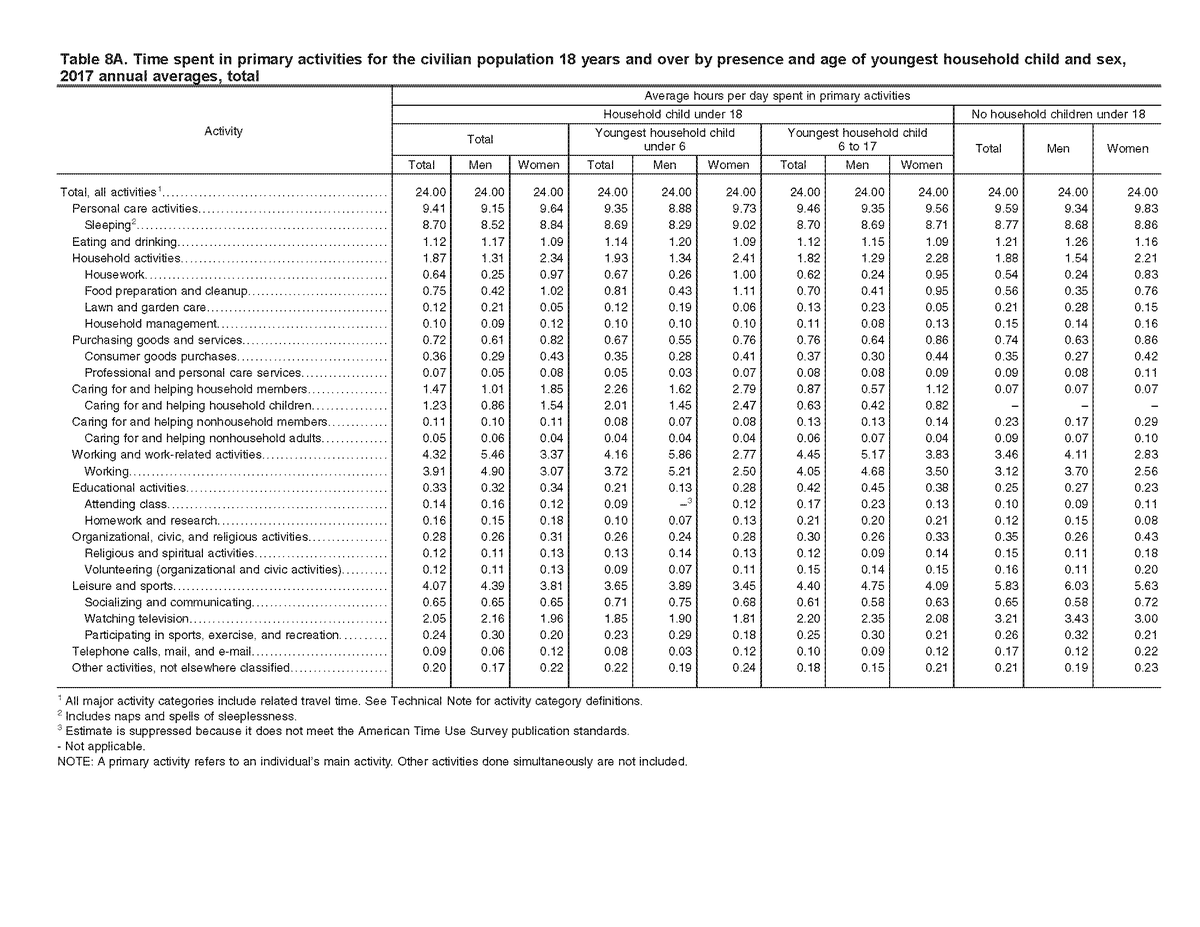
Table 8B, column 4: Men: Women:
Household activities: 1.34 1.80
Caring for household: 0.04 0.05
Work-related activities: 6.17 5.29
===========
Total: 7.55 7.14
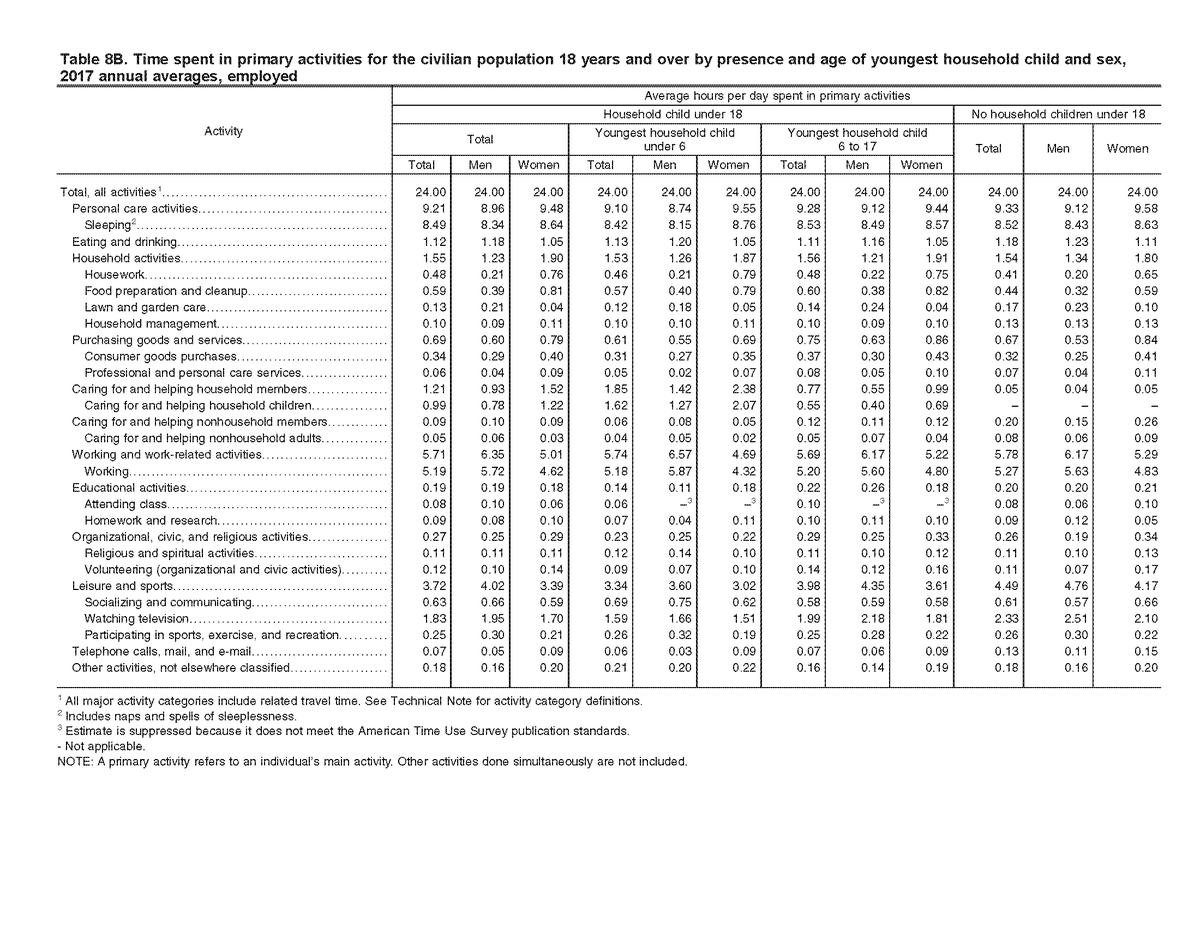
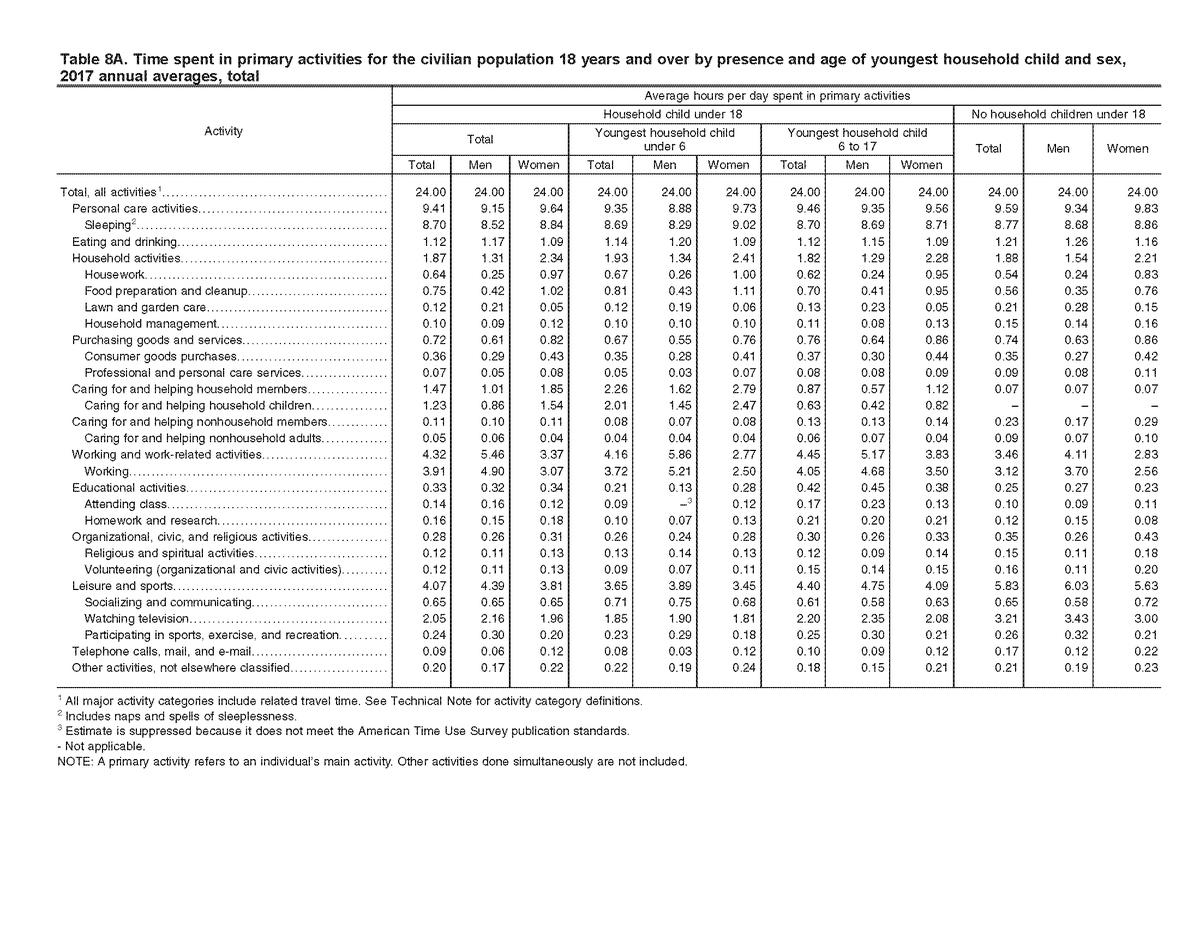
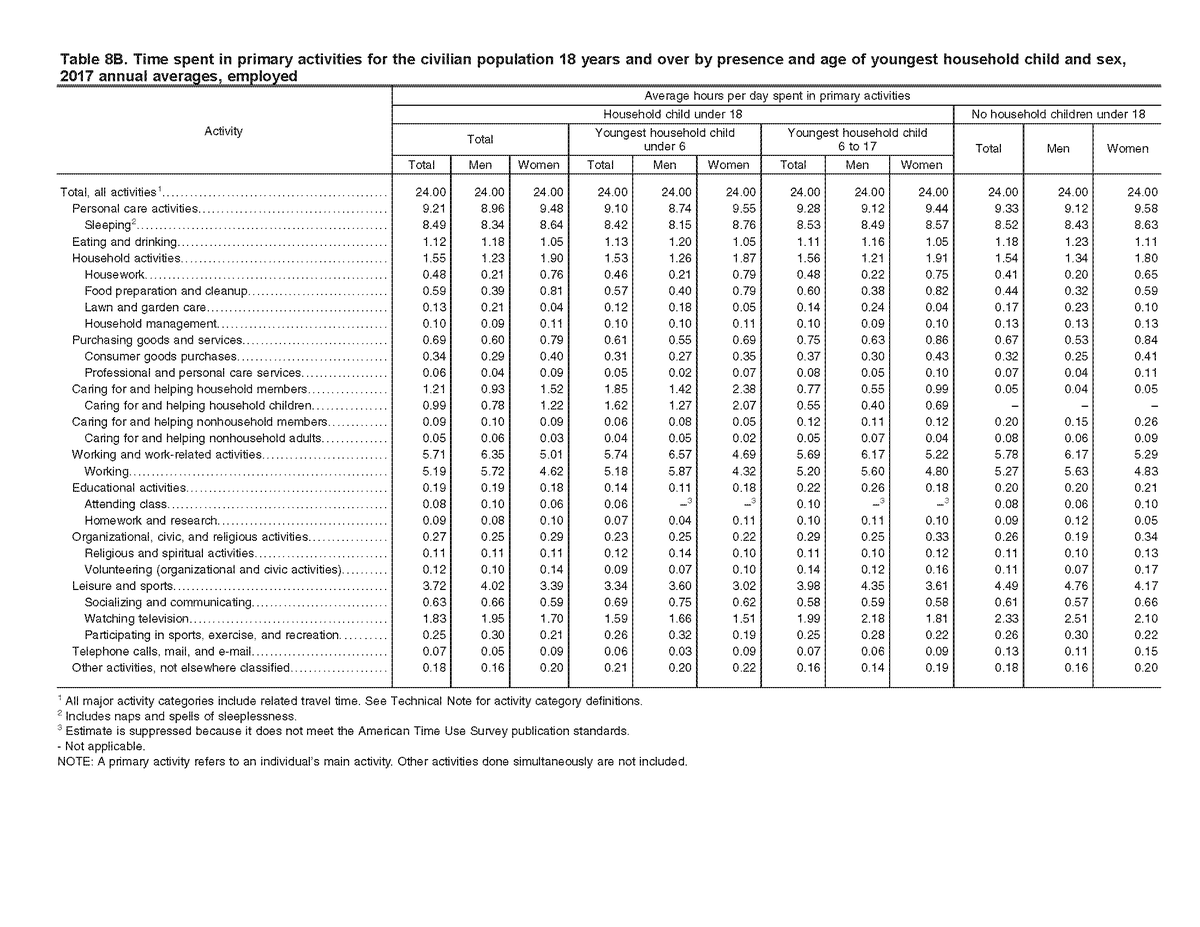
@LexyTopping writes "[m]en should work less and their employers and the government should help them to do so in order to close the gender pay gap" (google.com/amp/s/amp.theg…).
You claim that I "don[']t even understand [my] own chart" (). So where did I get the numbers wrong, @lillaambrus?



